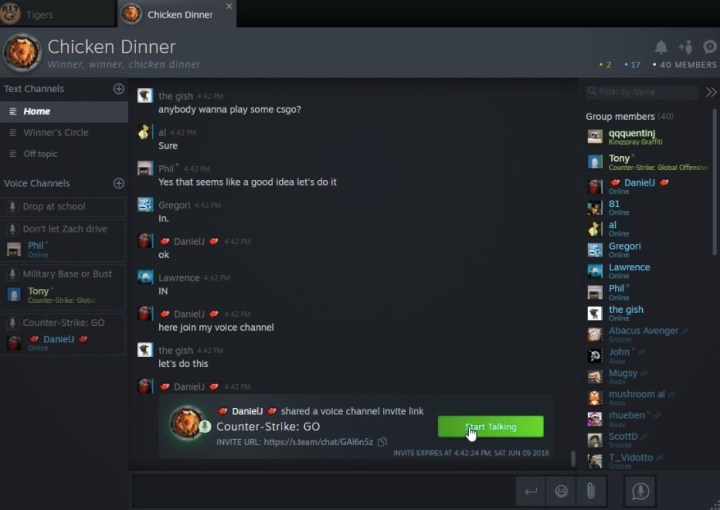
Steam’s overhauled chat client is now available to all Steam users. The client, which comes off as Valve’s answer to Discord, had been available in beta since June.
The bottom line: the client is a substantial improvement over the previous version, which badly needed an update. The mantra of the new client is versatility. It now supports group chat, differentiated channels, voice chat, and instant sharing of images and video, including YouTube clips and GIFs. You can now easily see which of your friends are online and invite them to voice chat using a simple drag and drop system.
The new client is obviously aimed at providing a better gaming experience with friends. Being able to create groups on the fly and save them for future use is one of the most impactful changes. Now you can keep your Counter-Strike: Global Offensive group separate from your League of Legends group. If you want to invite a friend to play with you, you can do that with ease now. You can also send a link through email, text, or in-app message to invite them into your game party.
Steam’s voice chat uses WebRTC on its backend for security. Voice chat is encrypted and goes through Steam’s servers, not directly to your friends. This design keeps both your IP address to yourself and hides your location.
Valve designed a fresh UI for the chat, one that it said makes it easier to improve the overall Steam experience going forward.
“Friends and chat are just the beginning. This update was built using a new UI framework and includes some important architectural improvements under the hood, all of which allow us to make more frequent updates to our web-based Steam components. There are many improvements to the overall Steam experience that we plan to tackle, and your feedback helps us to prioritize what’s next.”
The interface, as you’ll notice in the screenshot above, bears resemblance to Discord, the leading app for online gaming communication. It remains to be seen if Discord users will move over to Steam’s new and improved chat client, but at least gamers now have an option that doesn’t require them to have both Steam and
Steam’s new chat app is available via the client app and on browsers.
Editors' Recommendations
- A Redditor ‘didn’t know’ about the Steam Deck, so they built their own
- Is this Razer’s Steam Deck killer?
- This $15 Steam game is a must-buy for Zelda fans
- Xbox Game Pass loses some horror greats, but gains a kid-friendly racing game
- Steam Spring Sale: best deals, how long is the sale, and more


